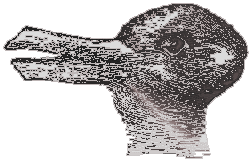 Gregory Eiselein
Gregory Eiselein Gregory Eiselein
Gregory Eiselein
Sandra Cisneros's Caramelo will be the longest and in many ways the most challenging book of the semester. Even though it is new, Caramelo just might be a truly great book, a masterpiece that is read and taught centuries from now. The Washington Post has called it "a watershed in U.S. Latino literature." Rigoberto González adds: "After nearly a decade of keeping her readers guessing, teasing us with many a false alarm that heralded the release date of her opus, Sandra Cisneros finally delivers what is surely the first important Chicano novel of the new millennium."
The next two books we will be reading—Caramelo and Monkey Bridge—are both funny, semi-fake, semi-real autobiographies. There will be a special section on the final examination devoted to these two novels. Thus, it will be to your advantage to know these books well.
To that end, I've developed a reading schedule for Caramelo in conjunction with four short writing assignments (see on the reverse of this sheet).
Each of these assignments is informal. You may type or e-mail me each assignment. The minimum length for each is a full, double-spaced typed page; more is fine. Each assignment is due at 11:30 a.m. (or before if by e-mail) on the assigned date. These assignments will be graded + [for a detailed, specific, tightly focused, and/or lengthy response] or X [the usual grade for those who complete the assignment] or - [for responses that seem to suggest a poor understanding of the novel].
In other words, please don't stress over these assignments. They are simply a chance for you to think about what you've read and to write about what you're thinking.
Length: 1-2 typed, double-spaced pages per assignment
Due Dates:
4A. Write an informal one-page journal entry. What did you think about when you read these opening chapters (chapters 1-39)? What has interested or intrigued you about the novel thus far?
4B. Make a list of the major characters you've encountered so far. Next to the name write a description of each character.
4C. One critic has written:
Cisneros has said she began Caramelo as a short story, but it kept growing. The semi-autobiographical work offers a lesson in Mexican history as well as in how to tell "healthy lies"--the ones that don't hurt anyone. The significance of the title surfaces many times over. It's the color of the rebozo left to Lala when her grandmother dies; the skin of the servant girl who gives Lala a later-in-life epiphany; the mixed heritage of a Mexican-American family that remembers "a country I am homesick for, that doesn't exist anymore, that never existed."
Respond to this paragraph: for example, its ideas about length, autobiography, lies, the title, Lala, the plot, skin color, Mexican-American ancestry, home, etc. How well does this paragraph get at what's important about this novel? What does it leave out or overlook? However you choose to respond, make sure your own comments about the novel are clear and grounded in specific passages from the text up to chapter 73.
4D. You just might be the first college students ever to read this book for a college-level literature course. Do you believe this novel is a good selection for college lit classes? If so, why? If not, why not?
Home | Department of English | Graduate Studies | Cultural Studies | Sex and the Body Politic | Kansas State University |
This page was updated on 16 March 2004. Other pages on this site may have been updated more recently.
These pages are copyright © 1995-2004 Gregory Eiselein.